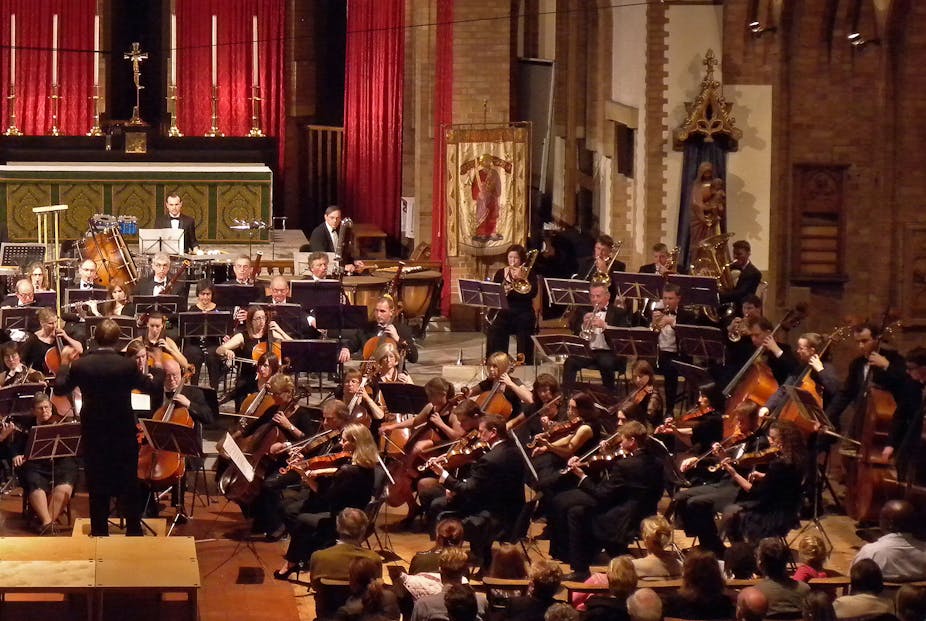Professional musicians are at nearly four times the risk of noise induced hearing loss as the general population, shows a new study in Occupational and Environmental Medicine. They are also 57% more likely to develop tinnitus – incessant ringing in the ears – as a result of their job.
Based on clinical evidence, this study of hearing disorders suffered by a group of German people between 2004 and 2008 identified 2,000 individuals from a sample population of three million who were employed as professional musicians. After adjusting for age and other factors such as sex and population density, professional musicians were consistently more likely to have noise induced hearing loss than the general public.
The study’s definition of professional musician was vague as it included those producing both unamplified and amplified (with speakers) music, but it describes the different types of hearing disorders very well. These range from tinnitus to sensorineural hearing loss.
But, sound exposure is cumulative and so noise-induced hearing loss is a cumulative disease, which may take many years to become detectable. The louder the source the faster the noise dose accumulation. So DJs and pop/rock musicians would face the highest risk. A fundamental problem with the latest study, however, was that the two types of musician were not considered separately.
Snuffing out noise
Aware of the health and safety issue of noise in the work place, the European Union has begun clamping down on noise exposure in recent years. This has been embodied in UK legislation as the Control of Noise at Work Regulations 2005. As noise is defined as unwanted sound and there is no unwanted sound in music, this has been a challenge for those involved in music performance to navigate.
Plus, there’s the fact that many highly talented individuals are caught in the conundrum of producing great music and running the risk of damaging their hearing in the process. This includes musicians in classical orchestras. Many studies over the past 30 years have investigated the extent that self-produced unamplified music does cause hearing damage. The most recent research, published in the British Medical Journal, supports this.
Acoustic science
Noise induced hearing loss is totally preventable. But if the point of the activity is deliberately creating sound then it becomes significantly more difficult to mitigate the effects of noise. This is where the science of acoustics comes in to diminish the impact of sound on our ears.
Education, or at least awareness of the problem, is key and at the Royal Academy of Music we have introduced a strategy to inform students about the risk to their hearing and prevention measures they can take. Approximately 10% of the young people, 18-25 years, already have custom moulded ear plugs and another 10% of the students purchase the ear plugs during their course.
All students undergo health screening to check their hearing acuity. Typically 300 students are tested each year and then retested upon leaving the Academy. After collecting over 2,000 audiograms it is obvious that young classical musicians have exceptional hearing acuity even after, on average, 11 years of exposure.
The show must go on
The Acoustic Group at London South Bank University, which I’m part of, is trying to find solutions to the problem of managing sound exposure and producing top quality music. The challenge is actually greater in classical orchestras, which produce unamplified music. In amplified music you can simply turn the volume down, which is one of the tasks of the sound or recording engineer.
In an orchestral environment you have to explain this to the conductor. Luckily in recent years conductors have become younger – important as all of us lose our hearing with age – and the top orchestras the Acoustics Group has worked with have been very receptive to new ideas. Fortunately, the orchestral sound level is only just above the noise exposure limit value for typical performances: 85 decibels (still, a dangerous sound level). In the complex sound environment of a classical performance, however, it is very difficult to be certain of every performer’s sound exposure.
To stay within the sound limit ceiling, we have created devices to keep sound levels just below it. A key way is developing sound absorbent surfaces, including mirrors in rehearsal spaces and individual practice rooms. We developed a large two by one metre mirror to absorb the lower frequencies but reflects the higher frequencies and thus keeps the brilliance produced by the instrument whilst reducing the sound level by three decibels during practice.
We’ve also designed very light weight screens that can be placed on music stands in the orchestra pit – the most challenging acoustic environment. Each screen is tuned to each instrument type to allow the balance of the sound to be maintained.
Awareness of the dangers of excessive noise exposure is essential if musicians and music-appreciators are to continue enjoying music for as long as possible. It’s not just being exposed to a one-off explosion of sound that can damage our ears, but the cumulative effect of being exposed to loud noises (even if it is music) has a cumulative effect on the health of our ears.

